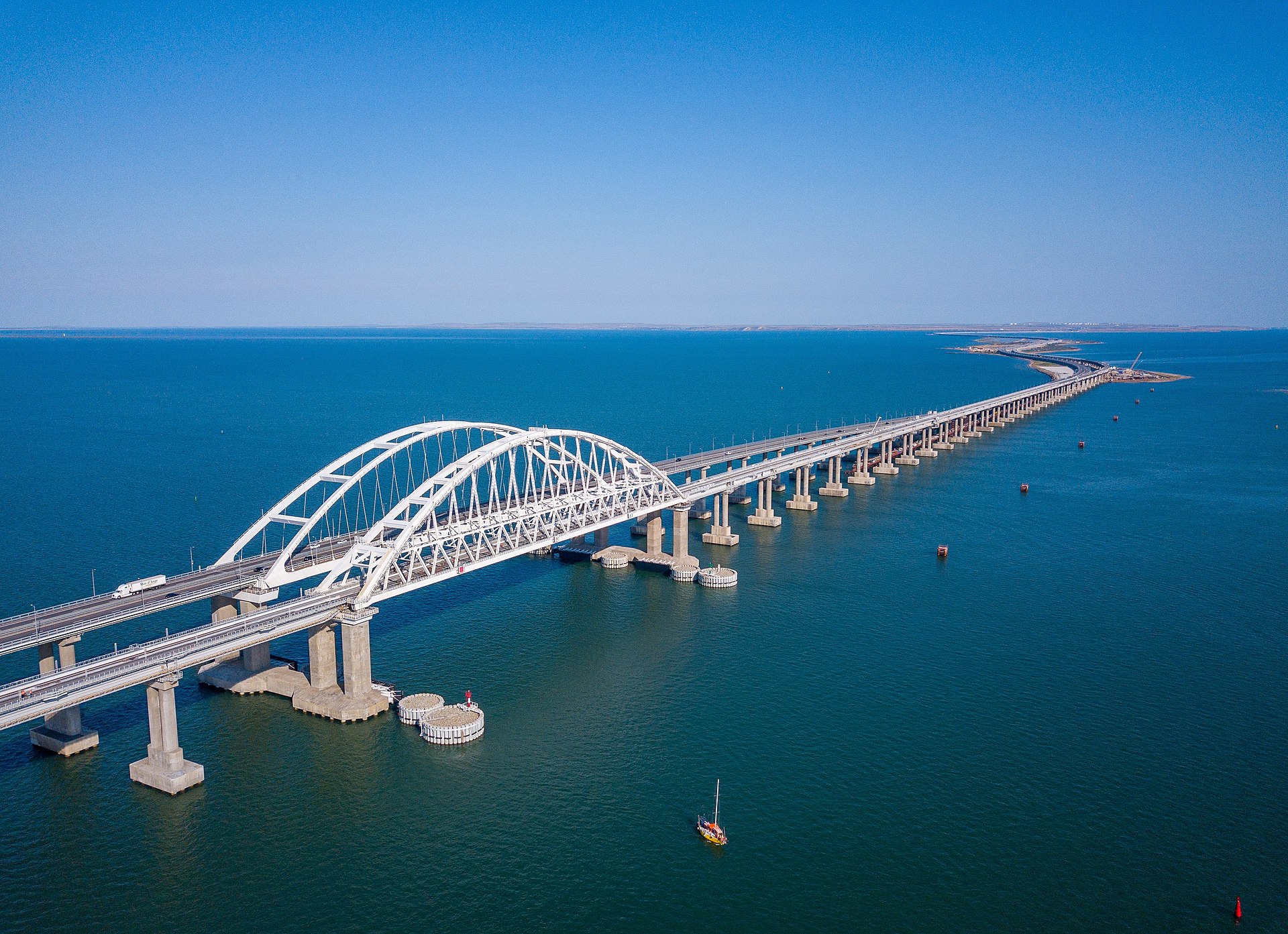As predicted by so many critics, this war is going to drag on with occassional flare ups and hopefully no major escalation.
Patrick Cockburn is the author of War in the Age of Trump (Verso)
Cross-posted from Counterpunch

Photograph Source: Rosavtodor.ru – CC BY 4.0
Russian missiles fired at Ukrainian cities and infrastructure are aimed at demonstrating to the world that Russia is still a power to be feared. But the barrage will not erase the impression of Russian weakness created by the blowing up of the Kerch Bridge.
As with other Russian setbacks, the response of President Vladimir Putin is to escalate the conflict, but he shows no signs of having a plan to change the balance of forces on the battlefield.
The partial severing of the bridge linking Russia and the Crimean peninsula may be more important politically than militarily. It will further persuade countries such as China and India that Russia is losing the war and that they need to avoid becoming collateral damage. Russian allies in Central Asia and the Caucasus will see it as further evidence of Russia’s decline as a regional power.
Militarily, the destruction of several spans of the bridge may not be as damaging to Russia as might first appear. Historically, bridges have proved difficult to destroy permanently in war and fairly easy to repair. The Ukrainian army has long been struggling to destroy Russian bridges over the Dnieper River to isolate Russian troops on the west bank. The rail bridge appears still to be operating and capable of carrying Russian heavy equipment.
On the other, Russia’s communications with its southern front north of Crimea are shown to be vulnerable and could be attacked again. A little-noticed point is that Russian forces grouped in a semi-circle around the eastern half of Ukraine will have even greater difficulty in reinforcing each other if they cannot use the Kerch Bridge. With the advantage of interior lines, Ukraine can move troops quickly in a day or two from Kherson in the south to Kharkiv and Donbass in the east, while a similar move by Russian forces might take up to a week or even longer.
Do the Kerch attack and the Russian retaliation mark a turning point in the war? Once again Ukraine has caught Russia by surprise, but this does not change anything fundamentally. The course of the conflict is still shaped by Mr Putin’s calamitous decision seven-and-a-half months ago to try to conquer Ukraine with far too few troops. What was true then is true now. When the Ukrainian army launched its successful offensive around Kharkiv last month, Ukrainian soldiers found they were fighting almost no Russian regular military units and instead were facing national guard or low-grade forces that ran away, abandoning their vehicles and heavy equipment.
Partial mobilisation might have worked well for Russia in March or April before Ukraine was capable of launching a counter-offensive. But by now, Mr Putin’s late mobilisation probably comes too late. The Russian army was not designed to train such large numbers of recruits. Many are being sent to the front with only a couple of weeks’ training to make up the numbers in units hollowed out by casualties.
As with almost everything done by the Russian government since the start of the war, the organisation of the mobilisation is shambolic, with civilian authorities in the provinces scooping up unsuitable recruits to make up their quota. Many of these are later rejected by the army.
Mr Putin has sacked many senior officers since 24 February, but their replacements have done no better because they all face the same problem of a chronic shortage of trained soldiers. This is exacerbated because the Russian leader has reportedly forbidden any retreat to more defensible lines.
What options does Mr Putin have left? Partial mobilisation may be working badly but it should provide more troops to be thrown into battle. He could systematically degrade the Ukrainian infrastructure by attacking electricity generation and transmission systems. But Russia is believed to be getting short of cruise missiles, fewer of which were fired over the summer compared to earlier in the year.
The prospect of Russia using nuclear weapons is greater than it was, but is probably still a long way off, given that Russia has other ways of escalating the conflict by using conventional weapons.
The nuclear threat clearly works in Russia’s favour and is taken increasingly seriously in the West. Mr Putin needs to give this threat credibility, so he has to look as if he might use nuclear weapons. Accidentally or on purpose, the possibility of them being used is greater than it was at the start of the war.
Support us and become part of a media that takes responsibility for society
BRAVE NEW EUROPE is a not-for-profit educational platform for economics, politics, and climate change that brings authors at the cutting edge of progressive thought together with activists and others with articles like this. If you would like to support our work and want to see more writing free of state or corporate media bias and free of charge. To maintain the impetus and impartiality we need fresh funds every month. Three hundred donors, giving £5 or 5 euros a month would bring us close to £1,500 monthly, which is enough to keep us going.


Be the first to comment